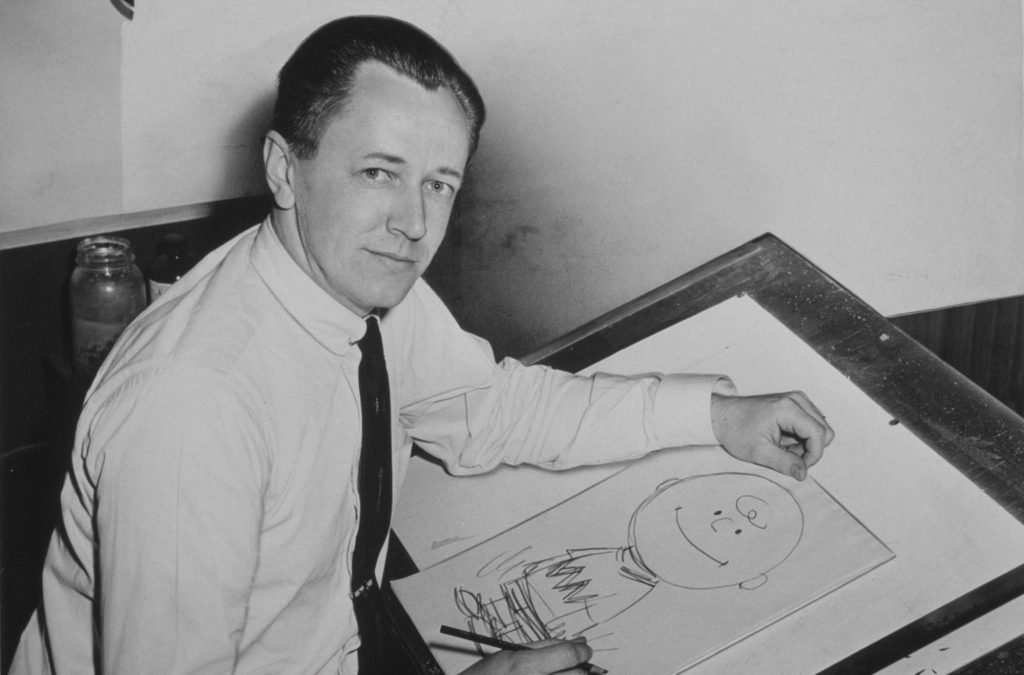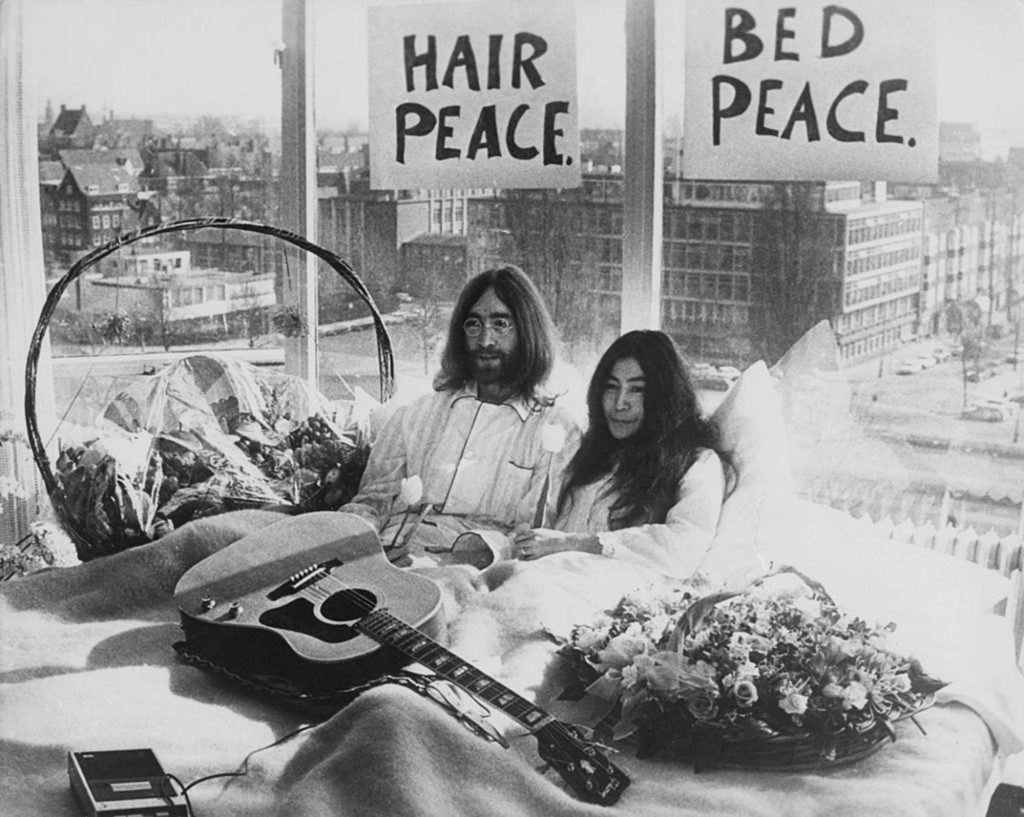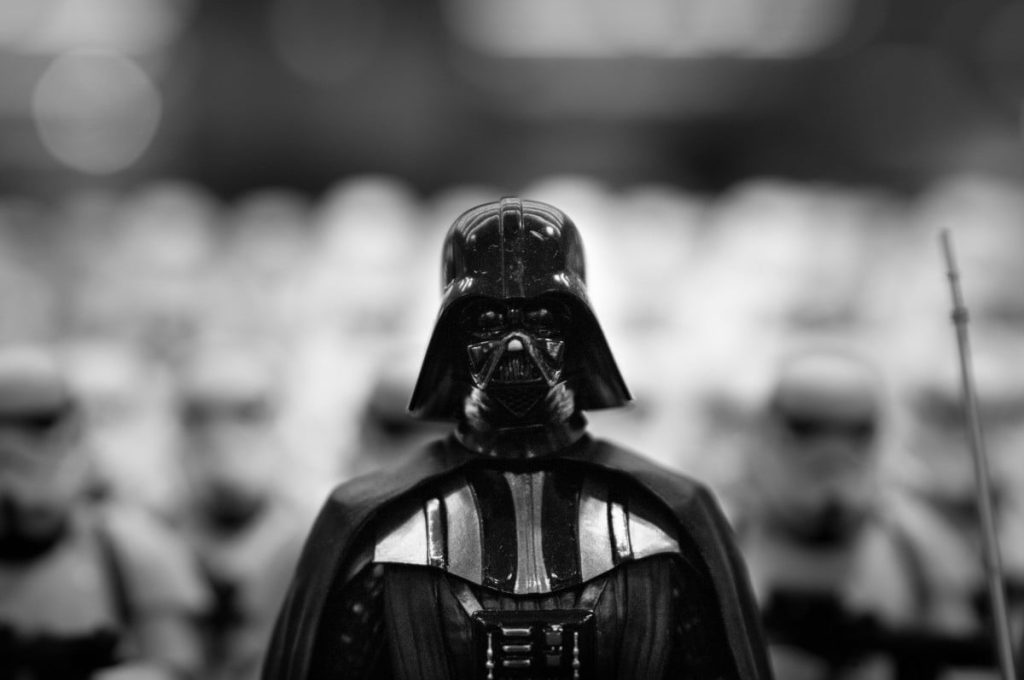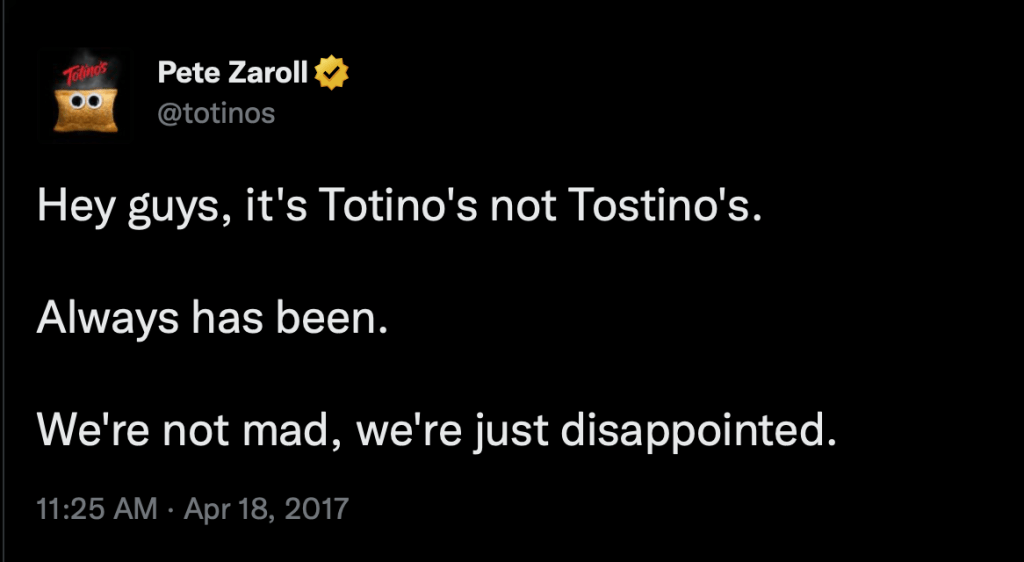Have you ever been absolutely certain about a past event, only to find out it never happened the way you recall?
You’re not alone!
From misremembering iconic lines in movies to recalling historical events incorrectly, the Mandela Effect showcases the unreliability of our memories. Stick around as we delve into the science behind this bewildering experience!
Watch our video to learn the 10 essential people skills you need to succeed:
What is The Mandela Effect?
The Mandela Effect is a phenomenon where a large group of people remember something differently than how it occurred in reality. It is named after Nelson Mandela, as some incorrectly remembered him dying in prison in the 1980s.
While some people say the Mandela Effect is just due to confirmation bias or misremembering, others entertain more speculative explanations, such as parallel universes.
Is The Mandela Effect Real?
Yes, the Mandela Effect is a real researched phenomenon and is an interesting take on the reliability of human memory. In one experiment1https://psyarxiv.com/nzh3s/, researchers found that there is a consistency in what people misremember and that popularly misremembered images were selected a significantly higher proportion of the time than the original.
Take the Mandela Effect Test
How certain are you that your memories are correct? The Mandela effect is different than being confused or forgetting the details of something that happened. Instead, the Mandela effect is when your memories don’t match reality. Then, to make it even crazier, multiply your experience into a collective memory, where many people are confused about the same thing!
Check your memory with our Mandela Effect test. The answers are at the bottom of each question.
1. When did Nelson Mandela die?

Let’s get to the most famous Mandela Effect example. Although the South African president didn’t die until 2013, many people remember Nelson Mandela dying in the 80s while in prison. Some even remember his widow giving a speech after his death.
2. Is it Berenstein Bears or Berenstain Bears?

Image: ICanRead.com
Ah, the classic childhood memory: curling up with a Berenstein Bears book. Wait, did we say Berenstein with an “e?” Plot twist: It’s actually spelled Berenstain Bears with an “a,” much to the surprise and disbelief of countless people.
3. In the portrait of Henry VIII is he holding a glove or turkey leg in his left hand?

Image: Wikipedia
Many people vividly remember him holding a turkey leg in his left hand, symbolizing his indulgent nature. However, that’s not the case! In reality, Henry VIII is not depicted holding a turkey leg in any of his famous portraits.
4. The creator of Peanuts was Charles Schultz or Charles Schulz?

Image: Roger Higgins, World Telegram staff photographer
You might remember growing up with the beloved Peanuts comic strip, created by Charles Schultz—except it wasn’t. The correct spelling is Charles Schulz, without the “t.”
5. Did the Fruit of the Loom logo have a cornucopia?

Image: @summoningsalt
No, not even as far back as 1893. Yes, we know it does look better with it.
6. Where did John Lennon and Yoko Ono have their first bed-in for peace? Amsterdam or New York?

Their first bed-in actually happened in Amsterdam, at the Hilton Hotel, in March 1969.
7. Which is the correct quote from Star Wars? “Luke, I am your father.” or “No. I am your father.”

While many fans swear by the line “Luke, I am your father,” Darth Vader actually said, “No, I am your father.” It’s as if our memories have been tampered with by a Jedi Mind Trick!
How did you do? Still not sure what this is all about? Keep reading for even more examples of the Mandela effect.
65 Mandela Effect Examples
Check out this Mandela effect list of some of the strangest and most perplexing examples.
1. The death of Bambi’s mom
Along with the collective trauma we all share from the death of Bambi’s mom, there’s also a mind-blowing Mandela effect.
It’s hard for us to tell you this, but Bambi’s mom doesn’t die at the beginning of the movie.
It’s OK. Take time to absorb that before you move on.
While nearly a whole generation remembers the tragic event happening at the beginning of the movie, it occurs about 40 minutes in. That’s over halfway through the film!

2. Totino’s, not Tostino’s
Of all the hot snacks of our childhood, Tostino’s pizza rolls stand out brightly in our memories. Uh, we mean Totino’s.
Apparently, the confusion about this company name was so significant the CEO of Totino’s had to set the record straight on Twitter.

3. So this is how democracy dies…
Star Wars seems plagued with Mandela effects, and this quote by Padme is one of them. While many remember her saying “democracy,” the correct quote is, “So this is how liberty dies… with thunderous applause.”
4. The Rock is cooking
Dwayne Johnson is everywhere, and so is his famous quote from his wrestling days, “Can you smell what the Rock is cooking?” We’ve all got it wrong! Instead, it was, “If you smell what the Rock is cooking.”
Yeah, that doesn’t make sense to us, either.

5. Avril Lavigne didn’t have milk
If you remember Avril Lavigne wearing a white t-shirt, holding her guitar, and sporting a milk mustache, you might be shocked to find out Avril was never a part of the got milk? Ad campaign. Another conspiracy theory about Avril to add to the list.
6. Shock me, baby; it wasn’t plaid.
Britney Spears’ skirt in the iconic music video “…Baby one more time” has some fans remembering Britney in a red plaid skirt. If you watch the music video, it’s just a plain black skirt.
7. Throwing some shade on Risky Business
In 1983, Tom Cruise danced across our screens in Risky Business, wearing a button-up shirt, white socks, and sunglasses. If you rewatch the scene, you’ll see Tom is not sporting the sunglasses that are present in just about every parody of this scene.
8. The Eagles?
Was the band called The Eagles or Eagles? Some people distinctly remember CD cover art that says, The Eagles. It’s an easy mistake between Eagles and The Eagles, but how could real fans get it wrong?
9. Mister Rogers’s theme song isn’t what you remember
For those who grew up with Mister Roger’s smiling face, and even those who didn’t, the theme song is familiar in American pop culture. But, while we all remember it as, “It’s a beautiful day in the neighborhood,” the lyrics are actually, “It’s a beautiful day in this neighborhood.”
It’s ok; your memory of the song flows better, so there’s no need to change how you sing it.

10. The Monopoly Man has perfect eyesight
The board game of all board games—Monopoly. Do you remember Monopoly Man?
Envision him now. He’s wearing a monocle, isn’t he?
Nope. You may be thinking of the Planter’s mascot because Monopoly Man never wore a monocle.

11. You got some splainin’ to do!
Despite being widely reputed as Desi’s catchphrase in I Love Lucy, the hard truth is, he never said, “Lucy, you got some splainin’ to do!” or, “Lucy you got a lotta splainin’ to do!”
Things he did say in the show:
- “Splain that if you can”
- “Lucy, if you’ll just give me a chance to ‘splain”
- “Lucy, ‘splain”
- “Okay, start ‘splainin’”
12. Mirror, mirror…
Most of us seem to remember the famous phrase from Snow White to be “Mirror, mirror on the wall.” And while this has been recreated and repeated in any number of pop culture references and spoofs, it seems we’ve all got it a little wrong. The correct phrase was “Magic mirror on the wall.”
13. Play it again, Sam
Casablanca is a treasure trove of one-liners, but one of the most beloved and oft-quoted lines isn’t what we remember it to be. The closest Humphrey Bogart got to this famed line was only, “Play it!”
14. Sex and the City
Sex and the City aired from 1998 to 2004, with a much-awaited comeback in 2022. Yet, some people still remember it as Sex in the City. One explanation? It could be a lazy pronunciation of the word “and,” which sounds more like Sex’n the City.

15. Pikachu’s black tail
Some people remember Pikachu as having a black-tipped tail, but his tail is yellow. His ears are black-tipped, and some venture to say our minds add the black tip to his tail because it makes more sense visually.
What do you think?

16. Richard Simmons looks different
If you’re buying a Richard Simmons costume or feeling nostalgic for his high-energy exercise program, you might remember him with sweatbands on his head and wrists. Think again. No sweatbands here.

17. Toons or Tunes?
Yet another blast from the past has us questioning whether it was Looney Toons or Looney Tunes. Saturday morning is filled with memories of Looney Toons, but the correct spelling of the show was Looney Tunes.

18. The curious case of Curious George
Did Curious George have a tail or no tail? While people remember the mischievous monkey with a tail, the sad truth is he never had one.

19. Tinker Bell & the Disney Log
Remember how Tinker Bell used to write the Disney Logo with her wand and dot the I at the end?
While Tink did fly in and sprinkle pixie dust around the Disney logo on several movies, it was never in this exact way that many people remember.
Reality aside, we still cherish the memory.
20. Abe Vigoda died 30 years before dying
We’ve all heard of the numerous celebrities whose death has been erroneously announced on the internet.
But, in 1982, none other than People Magazine announced the death of The Godfather’s Abe Vigoda… when he was actually alive.
21. Don’t scream about this bracelet
Another piece of art has people questioning what they saw. The Scream, one of the most reproduced and satirized works of art, is of a person frozen in a scream. In the past, people never saw the gold bracelet on the right hand.
Is it possible none of us noticed it in all these years?

22. The Cinderella Castle entrance to the Magic Kingdom
While the Cinderella Castle sits at the end of Main Street, many visitors and fans remember it in a much different location—the entrance to the theme park.
23. Play me a melody, play me a memory
Song lyrics can be hard to catch, with some musicians abandoning diction for creative expression. This isn’t the case when Billy Joel sings “Piano Man.” We checked, and he clearly sings, “Son, can you play me a memory?” but many people remember it as, “Son, can you play me a melody?”
24. It melts in your mouth
The promise of chocolate that won’t be messy is a big part of M&M’s appeal. That and the satisfying crunch that melts away to chocolaty goodness. But if you remember their slogan as “Melts in your mouth, not in your hand.” prepare to be underwhelmed. The real slogan? “The milk chocolate melts in your mouth, not in your hand.”
25. Meyer vs Mayer?
No, it wasn’t a landmark law case; it’s just a dispute over whether Oscar Mayer was ever Oscar Meyer. Some insist the meat company used to spell its name with an “e,” and this false memory may have been encouraged by misspellings in local papers. That and spelling it with an “e” makes more sense.

26. Jiffy doesn’t exist
There’s no such thing as Jiffy Peanut Butter. Confused?
On the other hand, Jif Peanut Butter debuted in 1958 and has been a staple in most pantries.
We were perplexed too, and dug a little deeper: Jiffy is a baking mix brand that’s been around since the 1930s! Think that explains it?

27. Objects in mirror are closer than they appear
Were you one of those kids that spent endless hours sitting in the passenger seat of your family car, watching the world recede in the side mirror, memorizing the safety warning? If so, you’ll likely remember it as saying, “Objects in mirror may be closer than they appear.”
Check your memory because it really says, “Objects in mirror are closer than they appear.”
28. Mona Lisa wasn’t smiling
Some people claim that the Mona Lisa didn’t use to smile. Somehow, that tiny lift of the mouth that we’ve analyzed and postulated over slowly emerged into reality.
We’re not buying that one! But we wonder if her expression has become easier to read because it has been talked about so much.
Honestly, it’s a perplexing microexpression, so it’s easy to see how not everyone thinks she is, or was, really smiling.

29. Shaggy’s adam’s apple
Can’t you distinctly remember Shaggy’s Adam’s apple when he’d swallow nervously?
We do.
So we were shocked to discover Shaggy doesn’t have Adam’s apple.

30. Feel the Febreeeeze
Febreze has been around for a while, making the world fresher.
So maybe that’s why some people remember the brand as Febreeze, a literal take on product branding. If you remember it with two e’s, here’s one consolation—even people who have worked for the company have gotten it wrong too!
31. Don’t hyphenate those crispy wafers
Kit Kat is not Kit-Kat. This is true on UK and US wrappers, but it just feels wrong. For those who remember a hyphen, we’ll give you a break.

32. Sinbad and Shaq
90s kids will all attest there was absolutely a movie starring Sinbad. For those who say this is simply a mix-up with the film Kazaam starring Shaq, others insist this isn’t the case.
33. Cheez-Itz is just Cheez-It’s
This goes against everything we remember about our childhood, but there is no “z” friends.
Cheez-It doesn’t make sense to us, but the crackers still taste great, regardless of the name.

34. Oh Captain, my Cap’n
The Captain on the Cap’n Crunch box has us doubting this is true, but it’s never been Captain Crunch! The high-sugar cereal with the great mascot has apparently always been Cap’n Crunch.

35. We missed this bulls-eye
The Target logo has one red ring with a red bulls-eye in the center. But some remember two red rings and a white bulls-eye. Can so many people remember such a famous logo incorrectly?

36. Where is South America?
Some people are perplexed at how far East South America appears on a world map. In their memory, they’ll say that maps and teachers once taught South America was directly beneath North America.

37. Chick? Chic? Chik?
The American chicken fast-food restaurant appears in many people’s memories under a different name than Chick-fil-a. Some insist it was once Chic-fil-a or even Chik-fil-a. We’ll chalk this one up to simple spelling confusion.

38. What if I… never told you
Morpheus never said, “What if I told you” in any of the Matrix movies. That is, unless, you count the endless memes immortalizing the line.
39. Ben Franklin was never president
Despite the fact that he was never president, many people remember learning that Ben Franklin was. But he is on the $100 bill.

40. Stouffer‘s stovetop stuffing
Stouffer’s Stove Top, in the memory of many people, was the delicious and easy-to-make instant stuffing.
This Mandela effect had us digging for answers, and we found that even before Nestlé owned Stouffer’s, there never seemed to be a stove-top stuffing product from this company.
The item your mom or grandma likely had in the pantry was from Kraft.
41. C-3PO has a silver leg
The most ardent fans of Star Wars (and Star Wars fans are SUPER fans) don’t remember C-3P0 with a silver leg. The rest of his body is gold, but his right leg below the shin is silver. Is it possible that this distinct feature went unnoticed for years?

42. Good morning Clarice
Hannibal Lecter never said the chilling “Hello Clarice” everyone remembers from the movie.
Instead, he said, “Good morning Clarice.”
43. Chartreuse color
Many people remember the color chartreuse as being a shade of pink or rose, when in fact it is a greenish-yellow color. The name actually comes from a French liqueur that is this specific hue.

44. Ford logo: curly or not curly?
Some people recall the Ford logo without a curly flourish on the “F,” but the actual logo has a little loop or curl at the end of the letter’s horizontal line.
This is a detail that many claim to have never noticed before, even though it has been a part of the logo for a long time.

45. Carmen Sandiego’s coat color isn’t black?
In this case, people often remember Carmen Sandiego, the fictional globe-trotting criminal, wearing a black coat.
However, her signature look includes a red trench coat, not a black one.

46. “Smoky” vs. “Smokey” the Bear“
Wait, was his name Smoky or Smokey? Reality check—It’s Smokey, with an “e,” even though that extra vowel seems like it’d be better left out!

47. The Lindbergh baby was found
Many of us think we know the ending of the infamous Lindbergh baby kidnapping case. Kidnapped and never found, right? Wrong! The baby was sadly found deceased
48. How many seats in JFK’s car?
Some people swear president John F. Kennedy was in a four-seater car when he was assassinated. Break out your history textbooks, folks—there were actually six seats!

49. “Interview with A Vampire” vs. “Interview with The Vampire”
Whether you’re a fang fan or not, you might remember Anne Rice’s book as “Interview with A Vampire.” Sink your teeth into this—the actual title uses “The,” not “A.”
50. What does the Thinker look like?
Ah, the Thinker, pondering life’s greatest questions. But is he resting his chin on his hand or his forehead? Trick question!
His chin is actually on the back of his hand, not like the deep-in-thought pose we all mimic.

51. McDonald’s vs. MacDonald’s
Many remember it as “MacDonald’s,” but alas, that’s a side order of false memories. It’s McDonald’s, no extra ‘a’ included!
52. Butt with a hyphen?
Is it “Butt-Head” with a hyphen or “Butthead” without? If you chose the latter, you’re headbanging to the wrong grunge tune! It’s “Butt-Head,” hyphen and all.
53. When did Neil Armstrong pass away?
Some recall him dying years earlier than his actual 2012 passing.
Spoiler: He didn’t fake his death like a moon landing conspiracy!
54. The Staples logo
The Staples logo: plain and simple, right? Hold onto your paperclips! Many are shocked to discover that the “L” is actually a half-open staple. Minds. Blown.

55. White-Out our Wite-Out?
Correcting mistakes in the ’90s like a champ, you reach for the White-Out. Wait a minute, it’s spelled “Wite-Out”? That’s right, no ‘h’! It’s like our entire school life was a typo.

56. It’s a Barbie world!
“I’m a Barbie girl, in a Barbie world.” Or was it, “I’m a Barbie girl, in the Barbie world”? Hold onto your plastic tiaras! It’s actually “a Barbie world,” not “the Barbie world,” but we’re all still fantastic, made of plastic.
Bonus List of Mandela Effect Emojis
Brace yourself because none of these emojis ever existed.
57. The flipflop (different than the recently release thong sandal)
58. The robber
59. A slice of pumpkin pie with whipped cream
60. Left-facing seahorse
61. A hiker
62. Toaster
63. Swordfish
What are Some Causes of the Mandela Effect?
Some people say it’s easily explained with psychology and neuroscience, while others might believe different causes. Here are some of the possible causes of the Mandela effect.
Alternate Realities. This is the most popular non-scientific explanation for the Mandela effect and relies on the belief that infinite worlds and realities exist. This has made for fantastic movie plots, and some physicists even defend the multiverse2https://daily.jstor.org/the-real-science-of-the-multiverse/. Still, we’ll leave you to decide whether this is the most plausible explanation for the Mandela effect.
The Internet. While disinformation has recently gained more attention, the internet has long been a breeding ground for false information. There are constant announcements of people who have died but are still alive, information that is skewed and reinterpreted, and, let’s not even get into deep fake. If outside forces create the Mandela effect, we point to the internet.
Priming. You may have heard about this on crime shows; priming is when a person phrases a question so that they give the desired answer. Priming is also when the environment you live in impacts your responses. Our surroundings and what we see, hear, and imagine often shape perception and even memory3https://psycnet.apa.org/record/1990-16343-001.

Image: Brain Web
Confabulation. As humans, we need resolution, and our brain fills in the gaps4https://www.ncbi.nlm.nih.gov/books/NBK536961/ that either don’t make sense or are simply missing. This is a great explanation for Mandela effects like Berenstain Bears, where the spelling makes more sense with an e. It’s possible people fill in the gaps and adjust reality to fit their presuppositions.
False Memories. Unlike confabulation, personal desire often fuels false memories5https://www.ncbi.nlm.nih.gov/pmc/articles/PMC3143501/, along with the need for self-relevance, and other unconscious motivations. Researchers continue to be perplexed by false memories, and it remains a controversial topic.
If nothing else, the Mandela effect is a great conversation starter! If you’re looking for more, check out our 57 Killer Conversation Starters So You Can Start A Conversation With Anyone, Anytime43
Article sources
- https://psyarxiv.com/nzh3s/
- https://daily.jstor.org/the-real-science-of-the-multiverse/
- https://psycnet.apa.org/record/1990-16343-001
- https://www.ncbi.nlm.nih.gov/books/NBK536961/
- https://www.ncbi.nlm.nih.gov/pmc/articles/PMC3143501/
How to Deal with Difficult People at Work
Do you have a difficult boss? Colleague? Client? Learn how to transform your difficult relationship.
I’ll show you my science-based approach to building a strong, productive relationship with even the most difficult people.
